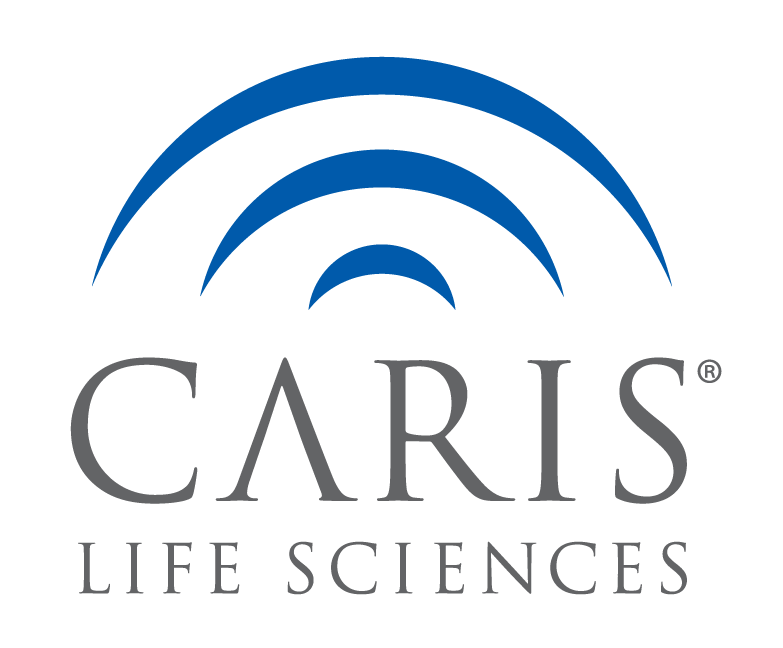Background: Tissue factor (TF), a component of the coagulation cascade, transmembrane receptor, and cofactor for factor VII/VIIa is expressed by subendothelial cells and critical to hemostasis, thrombosis, cell proliferation, angiogenesis, and metastasis. TF is suggested to have a critical role in colorectal cancer (CRC). Here we assessed the clinico-molecular features associated with TF expression (exp) in CRC.
Methods: Tumor molecular profiling was performed for 14,0786 samples by NextGen Sequencing on DNA (592 genes or WES) and RNA (WTS) and immunohistochemistry (IHC) at Caris Life Sciences (Phoenix, AZ). TF-high (TF-H) and TF-low (TF-L) RNA exp were defined as ≥ 75th– and < 25th-percetile of TF transcripts per million (TPM), respectively. X2/Fisher-exact and Mann Whitney U tests were used for comparison, and P-values were adjusted for multiple comparisons. Cell infiltration in the tumor microenvironment (TME) was estimated by quanTIseq. Real-world overall survival (OS) information was obtained from insurance claims data and Kaplan-Meier estimates were calculated for molecularly defined patients (pts).
Results: TF exp was higher in primary tumors compared to metastatic sites (2.3-fold, P < 0.001); higher in lung vs. liver metastases (0.6-fold and 0.3-fold, p < 0.001); higher in rectal (1.4-fold), right-sided (1.3-fold), and transverse (1.2-fold) compared to left-sided (P < 0.001); and highest in CMS1 tumors (CMS2 0.4-fold, CMS3 0.7-fold, CMS4 0.8-fold, P < 0.001). TF exp was higher in tumors with high TMB (TMB ≥ 10 Mut/Mb) (1.6-fold), dMMR/MSI-H (1.9-fold), and PD-L1 exp (1.8-fold) (P < 0.001 each). Compared to WT tumors, mutations in KRAS (1.2-fold, P < 0.001), BRAF (1.5-fold, P < 0.001) and ERBB2 (1.2-fold, P < 0.01) were associated with higher TF exp. In pMMR/MSS CRC, TF-L tumors were associated with TP53, APC, and NRAS mutations, and TF-H was associated with KRAS, PIK3CA, SMAD4, FBXW7, BRAF, ARID1A, GNAS, SMAD2, RNF43, KMT2D and BRCA1 mutations. TF exp was positively associated with most immune cell populations, most strongly with endothelial cells. In pMMR/MSS KRAS WT CRC, TF-H was associated with worse OS than TF-L. TF-H was also associated with worse OS for pMMR/MSS CRC pts treated with FOLFOX (HR: 1.5, CI:1.2-1.8, p < 0.0001), FOLFIRI (HR:1.7, CI:1.3-2.1, p < 0.0001), VEGF (HR:1.3, CI:1.1-1.6, p = 0.002) and EGFR inhibitors (HR:1.6, CI:1.1-2.3, p = 0.009) than TF-L. TF-H was associated with greater median days on pembrolizumab compared to TF-L in dMMR/MSI-H CRC (HR: 0.6, CI: 0.4-0.9, p = 0.018).
Conclusions: Our data show TF exp is associated with distinct clinical and molecular features, including tumor sidedness and metastatic pattern, as well as CMS subtype and KRAS, BRAF and ERBB2 mutations. TME cell infiltration and IO-related biomarkers were enriched in TF-H, with TF exp correlating with endothelial cell abundance. These findings and associations with patient outcomes suggest that TF may be a relevant biomarker and target in CRC.

